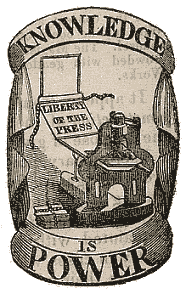


The United Nations was founded in 1945 to replace the failed League of Nations, in the hope that it would intervene in conflicts between nations and thereby avoid war. The first session was convened on January 10,1946 in the Westminster Central Hall in London and included representatives of 51 nations. It actually came to exist on 10/24/1945 when The Republic of China, United Kingdom, Soviet Union, France and the United States signed the Charter. It now is located at "Turtle Bay" on the Hudson River.
Today the budget of the UN is 4.19 billion dollars, of which the U.S. pays 22%. Communist China pays 2.05%, United Kingdom pays 6.15% , Russia pays only 1.10 % of the UN budget. One of the oil rich Nations pays $18.7 million dollars, and the United States, an oil poor nation, is assessed $423,464,855 annually. This despite that each Country has the same vote and veto power over any proposal made by the United States to the U.N.
Why are these statistics important? Because behind the headlines and fears of doom from Global Warming, there is a movement by "Goreites" and international bankers and brokerage firms to jump on the "band wagon" to profit from Global warming. It comes in the form of Carbon Credits. The Kyoto Agreement produced the Carbon Credit scheme as a way for Nations and international businesses to contribute to the anti-CO2 problem without actually reducing their CO2 emissions. They can buy carbon credits!
Carbon credits create a market for allegedly reducing greenhouse emissions by giving a monetary value to the cost of polluting the air. Emissions become an internal cost of doing business and are visible on the balance sheet alongside raw materials and other liabilities or assets.
For example, a business that owns a factory putting out 100,000 tonnes of greenhouse gas emissions in a year. Its government enacts a law that limits the emissions that the business can produce. So the factory is given a quota of 80,000 tonnes per year, 20,000 less than last year.The factory either reduces its emissions to 80,000 tonnes or is required to purchase carbon credits to offset the excess.
After costing up alternatives the business may decide that it is uneconomical or infeasible to invest in new machinery. Instead may choose to buy carbon credits on the open market from organizations that have been approved as being able to sell legitimate carbon credits.Which still leaves the company producing 100,000 tons of pollution, but makes some Carbon Credit broker a fee!
One seller might be a company that will offset emissions by planting a number of trees for every carbon credit you buy from them under an approved CDM project. So although the factory continues to emit gases, it would pay another group to go out and plant trees which allegedly will draw back 20,000 tonnes of carbon dioxide from the atmosphere each year.
Another seller may have already invested in new low-emission machinery and have a surplus of allowances as a result. The factory could make up for its emissions by buying 20,000 tonnes of allowances from them. The cost of the seller's new machinery would be subsidized by the sale of allowances. Both the buyer and the seller would submit accounts( to whom? a World regulating organisation?) for their emissions to prove that their allowances were met correctly.
For example, a business that owns a factory putting out 100,000 tonnes of greenhouse gas emissions in a year. Its government enacts a law that limits the emissions that the business can produce. So the factory is given a quota of 80,000 tonnes per year, 20,000 less than last year.The factory either reduces its emissions to 80,000 tonnes or is required to purchase carbon credits to offset the excess.
After costing up alternatives the business may decide that it is uneconomical or infeasible to invest in new machinery. Instead may choose to buy carbon credits on the open market from organizations that have been approved as being able to sell legitimate carbon credits.Which still leaves the company producing 100,000 tons of pollution, but makes some Carbon Credit broker a fee!
One seller might be a company that will offset emissions by planting a number of trees for every carbon credit you buy from them under an approved CDM project. So although the factory continues to emit gases, it would pay another group to go out and plant trees which allegedly will draw back 20,000 tonnes of carbon dioxide from the atmosphere each year.
Another seller may have already invested in new low-emission machinery and have a surplus of allowances as a result. The factory could make up for its emissions by buying 20,000 tonnes of allowances from them. The cost of the seller's new machinery would be subsidized by the sale of allowances. Both the buyer and the seller would submit accounts( to whom? a World regulating organisation?) for their emissions to prove that their allowances were met correctly.
Credits were chosen by the signatories to the Kyoto Protocol as an alternative to Carbon taxes. It is easier to convince a credulous public to accept Credits than to impose taxes. A criticism of tax-raising schemes is that they are frequently not pledged as security, and so some or all of the taxation raised by a government may be applied inefficiently or not used to benefit the environment. IE your social security taxes!
The theory of the Carbon Credit advocates is: "By treating emissions as a market commodity it becomes easier for business to understand and manage their activities, while economists and traders can attempt to predict future pricing using well understood market theories. Thus the main advantages of a trade in Carbon Credits over a carbon tax are:
the price is more likely to be perceived as fair by those paying it, as the cost of carbon is set by the market, and not by politicians. Investors in credits have more control over their own costs." (source Wikapedia)
The flexible mechanisms of the Kyoto Protocol supposedly ensure that all investment goes into genuine sustainable carbon reduction schemes, through its Internationally agreed validation process. Here again you have a World Government body deciding and dictating how business in the United States will be conducted!
The theory of the Carbon Credit advocates is: "By treating emissions as a market commodity it becomes easier for business to understand and manage their activities, while economists and traders can attempt to predict future pricing using well understood market theories. Thus the main advantages of a trade in Carbon Credits over a carbon tax are:
the price is more likely to be perceived as fair by those paying it, as the cost of carbon is set by the market, and not by politicians. Investors in credits have more control over their own costs." (source Wikapedia)
The flexible mechanisms of the Kyoto Protocol supposedly ensure that all investment goes into genuine sustainable carbon reduction schemes, through its Internationally agreed validation process. Here again you have a World Government body deciding and dictating how business in the United States will be conducted!
Goldman Sachs, the investment bank, has strongly come out in favor of government regulation that creates long-term value for greenhouse gas emissions reductions and new technologies. Voluntary action, it reasons, is insufficient. It also will guarantee a market for it's investment in Carbon credits!
Market analysts have called the U.S carbon market a "hibernating giant." With Goldman Sachs leading the way. Greed is the middle name for these people.
Goldman Sachs has a history of making long-term strategic investments in new product lines. Gus Levy, its former legendary partner, famously conceded that the investment bank was greedy, but clarified, "long-term greedy." The fact that the powerhouse of capitalism is taking the plunge into environmental markets is perhaps the embodiment of this mantra, and the surest signal yet that there is money to be made on sustaining ecosystem services.
Goldman Sachs has made overtures to leadership in Communist China, one of the Worlds worst polluters, to form a joint venture with their Carbon Credit scheme. It is Reforestation, to creation of a carbon sink--a carbon reservoir that is increasing in size--in which plants and other organisms use photosynthesis to remove carbon from the atmosphere by incorporating it into biomass and release oxygen into the atmosphere. The carbon sink concept has become more widely known because the Kyoto Protocol allows the use of carbon dioxide sinks as a form of carbon offset credit, which can be traded on global markets subject to obtaining United Nations approval through a formal application process. My question is how long does it take a tree to grow before it is a CO2 "sink"?
Do Americans really want to go down this road. It only leads to more World Government control, and less freedom for us.








No comments:
Post a Comment